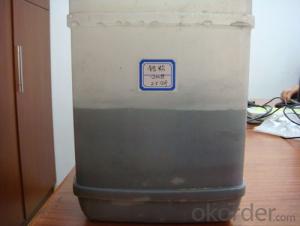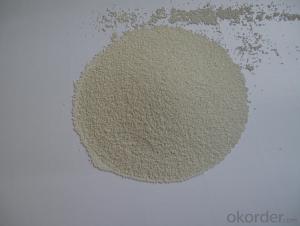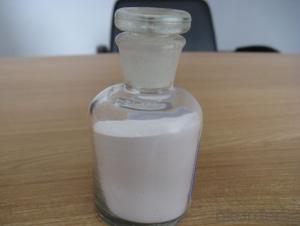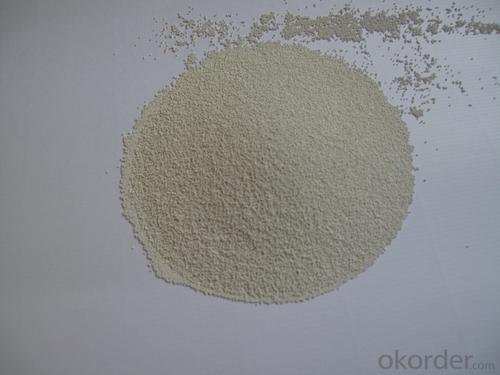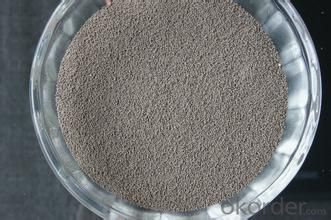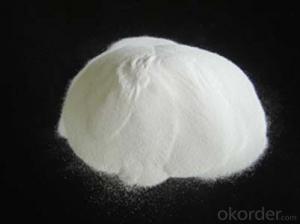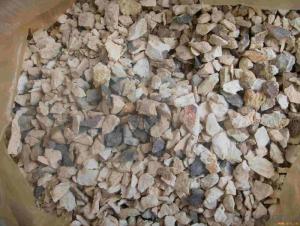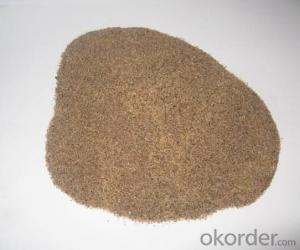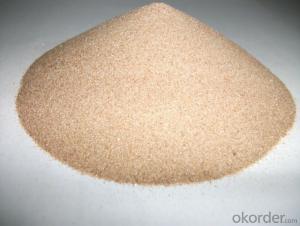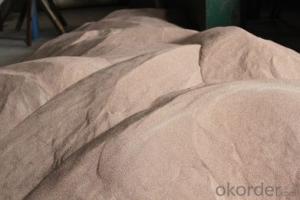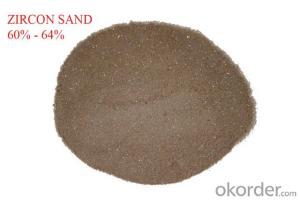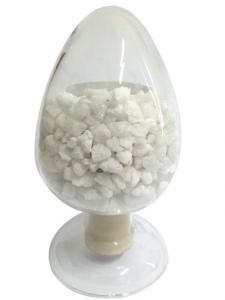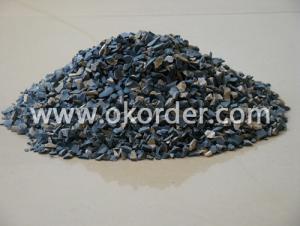Raw Materials for Refractory:Zircon Sand and Zircon Flour/Powder
- Loading Port:
- Tianjin
- Payment Terms:
- TT OR LC
- Min Order Qty:
- 25 m.t.
- Supply Capability:
- 3000 m.t./month
OKorder Service Pledge
OKorder Financial Service
You Might Also Like
Refractory Materials/ Zircon Sand and Zircon Flour/ Powder
1.Structure of Zircon Sand and Zircon Powder
We are offer zircon sand With Below Mention Descriptions: ZrO2 65 - 67 %. We are offer zircon sand With Below Mention Descriptions: ZrO2 65 - 67 %. Zircon is a remarkable mineral, if only for its almost ubiquitous presence in the crust of Earth. It occurs in igneous rocks as primary crystallization products, in metamorphic rocks and in sedimentary rocks as detrital grains.
Further, the mineral due to hardness, durability and chemical inertness, zircon persists in sedimentary deposits and is a common constituent of most sands.
2.Main Features of Zircon Sand and Zircon Powder
1 Tiny, round, solid ball shape provides greater surface area for improved performance and dispersion in its application
2 High refractory rating, lower specific gravity rating, and higher service temperature produces greater yield
3 With lower bulk density, it offers better air permeability for better performance as a result of its overall physical characteristics
3.Main usage of Zircon Sand and Zircon Powder
1)80-120M zircon sand is used in investment casting, the processing is called dipping
2)It can enhance the shell`s thickness
3)It is specialize used in inner layer being mixed with silica sol.High temperature applications. Primary source for investment casting shell molds, foundry cores,
metal chills, ladle brick, welding rod coatings, abrasive cleaning, ceramics, glass, chemical,
refractory bricks, abrasive & mold washes, solid oxide fuel cells and nuclear power plants.
4. Zircon Sand and Zircon Powder Images

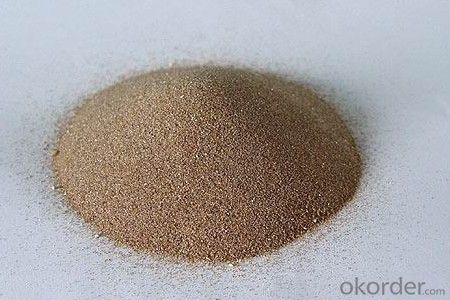
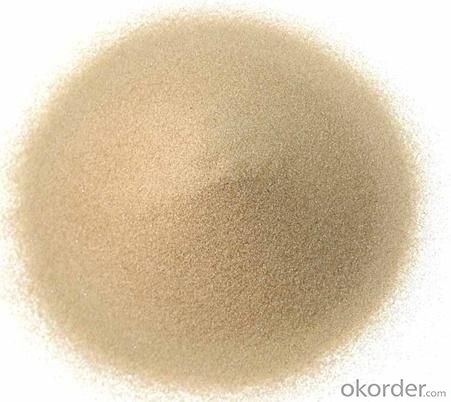
5. Zircon Sand and Zircon Powder Specification
Specific gravity | 4.7 |
Bulk density | 170 – 180 lb/ft³ (2700 kg/m³) |
Hardness | 7.5 Mohs |
Angle of repose | 30° |
Melting point | 4000° F (2200° C) |
Thermal stability | no change to 3090° F (1700°C) |
Loss on ignition | 0.02 – 0.12% |
6.FAQ of Zircon Sand and Zircon Powder
1). Q: Are you a factory or trading company?
A: We are a factory.
2). Q: Where is your factory located? How can I visit there?
A: Our factory is located in China. You are warmly welcomed to visit us!
3). Q: How can I get some samples?
A: Please contact me for samples
- Q: Technical scheme of refractory for refuse incinerator
- Incinerator conditions and requirements for refractory lining1, working conditions: deal with rare earth, furnace body normal use temperature of 800~900 degrees.2, the specific requirement for refractory: refractory has good resistance to acid corrosion, thermal shock performance good stability and good high temperature.
- Q: Is refractory material harmful to human body?
- The risk of mineral wool and glass fiber have cancer!
- Q: What kinds of refractory will be used in kiln of sintering ceramics?
- If it is ordinary ceramic, you can use ordinary clay bricks and high alumina brick, adding calcium silicate board, the insulating brick and cotton fiber.
- Q: which kind of material should be used in fireproofing cabinet?
- Cabinet fireproof?panel can be divided into fiber cement fireproofing board, metal fireproof?panel, mineral wool fireproof?panel, perlite fireproof?panel and many other fireproof?panels. Wherein fiber cement fireproofing board is a new material with growing popularity , it has good thermal insulation and sound insulation performance and belongs to a1 level fireproofing material. Fiber cement fireproofing board is a kind of decoration sheet that takes silicious material or calcareous material as the main raw materials and is made by being combined with fibrous material and other additives in certain proportion. Metal fireproof?panel is a kind of sandwich dalle that takes aluminium plate, stainless steel plate, colorful steel plate and other metal materials as main raw materials and is made by adding some fire?retardant materials. Mineral wool board is a kind of fireproofing decorative board that takes mineral wool and glass wool as the main raw materials. Perlite fireproof panel is a kind of fireproofing hollow plate that take low alkalinity cement as the main materials and fireproofing perlite as filler.
- Q: Who knows what kind of fire prevention materials are there?
- Plant use general steel structure more often without too much modification. If there is a need for modification, boards which can meet the requirements of fireproof are suitable, such as gypsum boards and aluminium sheets. As for coating, it is favorable to use coating that has fine powder, high density and better sealing. Hardening agent mainly depends on the specific requirements.
- Q: What's the material of electrical fire prevention board?
- Industrial electrical fire prevention board is mainly aimed at fire protection and thermal insulation. Iron plate is electrically conductive with good thermal conductivity, which will cause the result that the equipment is not insulated and suffers larger superheating surface! ! ! !
- Q: what should be paid sttention when buying the refractory?
- solve the resources and the cost as much as possible. Accurate understanding and knowing the material temperature changes of various partsin order to choose the appropriate refractories. 4: 3, work performance, for example, take measures to ensure the overall life, and it is a very good buying principles: melting in high temperature metal erosion. These are the four major problems to consider when using refractory. You can choose low prices and low transportation costs of materials to meet the basic principles under the conditions described above. 2.carefully observe the material to prevent the desturction and reducing the costs. according to the structure of furnace, reasonable coordination of all parts of the material, fully take the advantages of material characteristics and strive to develop the recycle, to avoid the destruction of the materials.1. the working characteristics and the sport condition and analyze the reason of destroying the material, which can not only gurantee the product quality and reduce the expenses, get familiar with the chemical component and physics of the material.
- Q: how to classify Insulating Refractory ?
- General materials have test reports, where fire rating is labled.
- Q: which is better as household fireproof material ?
- the thickness recommended is 1mm or more # 304 stainless steel plate, refractory corrosion-resistant, easy to clean. It now appears that among the most common fireproof material, asbestos is the best. But the asbestos harmful effect is also great, especially for lung damage. Now on the market, the polyurethane, polystyrene, rock wool glass wool, phephenolic aldehyde fireproofingthermal insulation board. But now the phenolic aldehyde fireproofing thermal insulation board has superior performance! phenolic aldehyde containing only carbon, hydrogen and oxygen atoms, when subjected to pyrolysis, except small amounts of CO gas, the other will not produce toxic gases, maximum smoke density is 5.0%.
- Q: What are the refractories for converter?
- Magnesia carbon material with large surface repair vessel, in addition to supporting the use of magnesia and magnesia cement.
Send your message to us
Raw Materials for Refractory:Zircon Sand and Zircon Flour/Powder
- Loading Port:
- Tianjin
- Payment Terms:
- TT OR LC
- Min Order Qty:
- 25 m.t.
- Supply Capability:
- 3000 m.t./month
OKorder Service Pledge
OKorder Financial Service
Similar products
Hot products
Hot Searches
Related keywords
